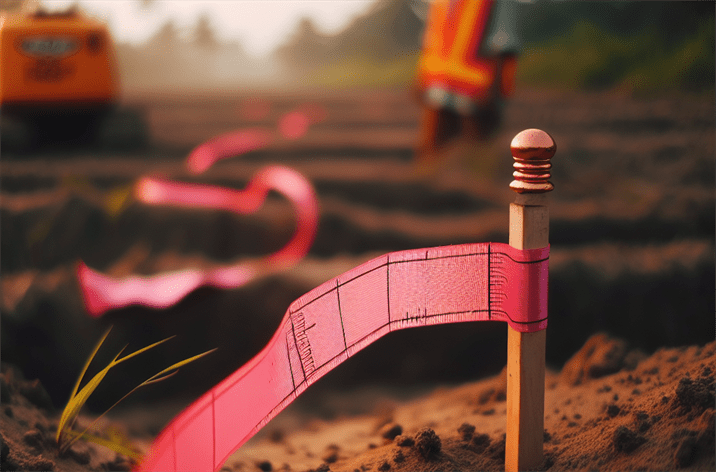Stakes and Lath: The Essential Guide for Construction Projects
Introduction
Did you know that stakes and lath have been pivotal components in construction for centuries, dating back to ancient civilizations? While it may not be a surprising statistic to those in the industry, it underscores the enduring importance of these tools in modern construction practices. In today’s fast-paced world of construction and landscaping, the role of stakes and lath has evolved, integrating innovative materials and sustainable practices.
Stakes and lath play an essential role in defining spaces, ensuring accuracy in measurements, and providing support for various structures. In recent years, as the construction industry shifts towards sustainability, these tools have been at the forefront of incorporating eco-friendly materials and techniques. This article delves into the definition and significance of stakes and lath, their historical evolution, and their practical applications in various projects.
Main Points
- Definition and Significance: What exactly are stakes and lath, and why are they indispensable in construction?
- Historical Evolution: A look at how these tools have developed over time.
- Practical Applications: Discover the numerous benefits and uses of stakes and lath in construction and landscaping.
For more insights on effective construction materials, check out our article on the benefits of using stakes and lath in construction.
What is Stakes and Lath?
Definition
Stakes and lath are fundamental tools used in construction and landscaping to establish boundaries, support structures, and aid in the accurate measurement of land. Stakes are typically made of wood or metal and are driven into the ground to mark specific points or areas. Lath, on the other hand, refers to thin strips of wood that can be used to create frameworks for structures such as fences, walls, or even as support for plaster.
Historical Context
The use of stakes and lath dates back to ancient civilizations. Archaeological evidence suggests that early builders used wooden stakes to establish the layout of their structures and define property lines. Over time, as construction techniques evolved, so did the materials and methods used for stakes and lath. The industrial revolution brought about new materials and manufacturing processes, making these tools more accessible and varied.
The Importance of Stakes and Lath
In contemporary construction, stakes and lath remain relevant due to their versatility and practicality. As trends in sustainable building practices gain traction, the construction industry sees a growing demand for eco-friendly materials. Many manufacturers now produce stakes and lath from sustainably sourced wood, aligning with the industry’s move towards greener practices.
Stakes and Lath in the Context of Landscaping
In landscaping, stakes and lath are invaluable for garden design and layout. They help delineate flower beds, paths, and other features, ensuring that landscaping projects are executed with precision. The use of stakes can also enhance the aesthetics of a garden, providing an organized and clean look.
Key Players or Contributors
Several notable manufacturers and innovators are contributing to the advancement of stakes and lath in the construction industry. Companies focusing on sustainable materials are gaining popularity, offering options that are both durable and environmentally friendly.
Learn more about best practices for using stakes and lath in construction.

How Does Stakes and Lath Work?
The Mechanics of Stakes and Lath
Understanding how stakes and lath work involves recognizing their roles in various construction applications. Here’s a step-by-step explanation of their application in projects:
-
Planning: Before any construction begins, a clear plan is necessary. This includes determining where stakes will be placed to outline the project area.
-
Placement of Stakes: Stakes are driven into the ground at specific intervals. They serve as reference points for measurements and help define the boundaries of the project.
-
Lath Installation: Lath can be attached to the stakes to create a framework. This framework is essential for various applications, such as supporting plaster or defining garden beds.
-
Final Adjustments: Once the stakes and lath are in place, adjustments can be made to ensure everything is level and aligned according to the project’s specifications.
Technological Foundations of Stakes and Lath
Modern advancements in technology have improved the materials and tools used for stakes and lath. Here are some key innovations:
- Durable Materials: The introduction of pressure-treated wood and composite materials has enhanced the longevity and durability of stakes and lath.
- Precision Tools: Laser measuring tools and digital layout systems now assist in achieving higher accuracy during the placement of stakes, minimizing human error.
Real-World Applications of Stakes and Lath
The functionality of stakes and lath can be seen in various real-world scenarios:
- Construction Sites: In commercial and residential projects, stakes are used to mark the boundaries of the site, ensuring compliance with zoning laws and property lines.
- Landscaping Projects: Gardeners and landscapers use stakes and lath to define planting areas, create trellises, and support plants as they grow.
Case Studies/Examples of Stakes and Lath in Action
-
Urban Garden Initiative: In a recent urban garden initiative, stakes were utilized to create designated planting areas, while lath provided support for climbing plants, showcasing how these tools enhance green spaces in cities.
-
Residential Construction: A residential builder implemented stakes and lath to ensure accurate layout for a new home. The clear demarcation of boundaries helped in adhering to local regulations and minimizing disputes with neighbors.
Best Survey Stake Layout
Creating an effective survey stake layout is essential for accuracy in construction projects. A well-planned layout ensures that all measurements are precise and that the project proceeds smoothly. Here are best practices for achieving an optimal survey stake layout:
-
Use Quality Materials: Select durable stakes that can withstand environmental factors. Consider using high-quality wooden stakes for construction that are treated for longevity.
-
Establish a Clear Reference Point: Before placing stakes, determine a fixed reference point that can be used for all measurements. This ensures consistency throughout the project.
-
Maintain Consistent Spacing: When placing stakes, maintain uniform spacing to ensure accuracy in measurements. This is especially crucial when defining boundaries or aligning structures.
-
Regularly Check Alignment: As stakes are placed, periodically check their alignment using tools such as a level or laser measure. Consistent checks throughout the process can save time and prevent errors.
-
Document the Layout: Keep a record of the layout, noting the position of each stake and any adjustments made during the process. This documentation can be invaluable for future reference.
For those looking to dive deeper into creating precise layout strategies, consider exploring our guide on how to create a precise survey stake layout for better results.
Future Trends in Stakes and Lath
As the construction industry continues to evolve, several trends are shaping the future of stakes and lath:
Sustainable Practices
The demand for eco-friendly materials is on the rise. More manufacturers are focusing on creating stakes and lath from recycled or sustainably sourced materials, reducing the environmental impact of construction projects.
Technological Integration
Advancements in technology will likely lead to more innovative uses of stakes and lath. The integration of smart tools, such as GPS and drones, can enhance the accuracy and efficiency of layout processes, making it easier to manage construction sites.
Customization
As projects become more unique, the need for customizable stakes and lath will grow. Manufacturers are likely to respond by offering bespoke solutions that meet specific project requirements.
Conclusion
Stakes and lath are more than just simple tools; they are foundational elements in the construction and landscaping industries. Their historical significance, practical applications, and evolving nature underscore their importance in modern building practices. As the industry moves towards sustainability and innovation, the future of stakes and lath looks promising.
Understanding how to effectively utilize these tools can greatly enhance the accuracy and efficiency of any construction project. Whether you are a seasoned professional or a DIY enthusiast, mastering the use of stakes and lath will undoubtedly lead to better results in your endeavors.
For further insights into the world of stakes and lath, explore our comprehensive articles on best practices for placing site grading stakes on uneven terrain and durable wooden stakes for construction and farming. Your journey towards better construction practices starts here!

